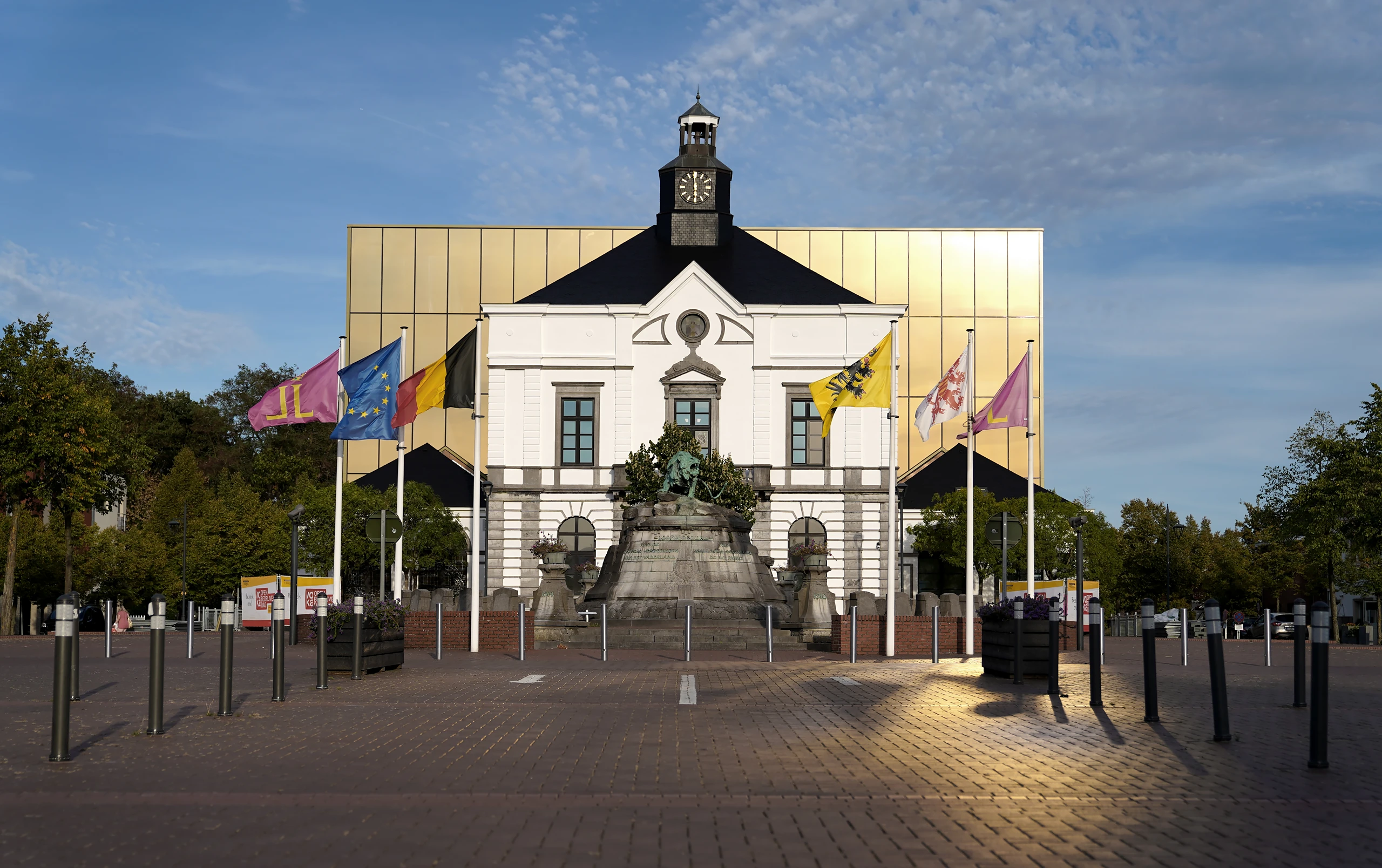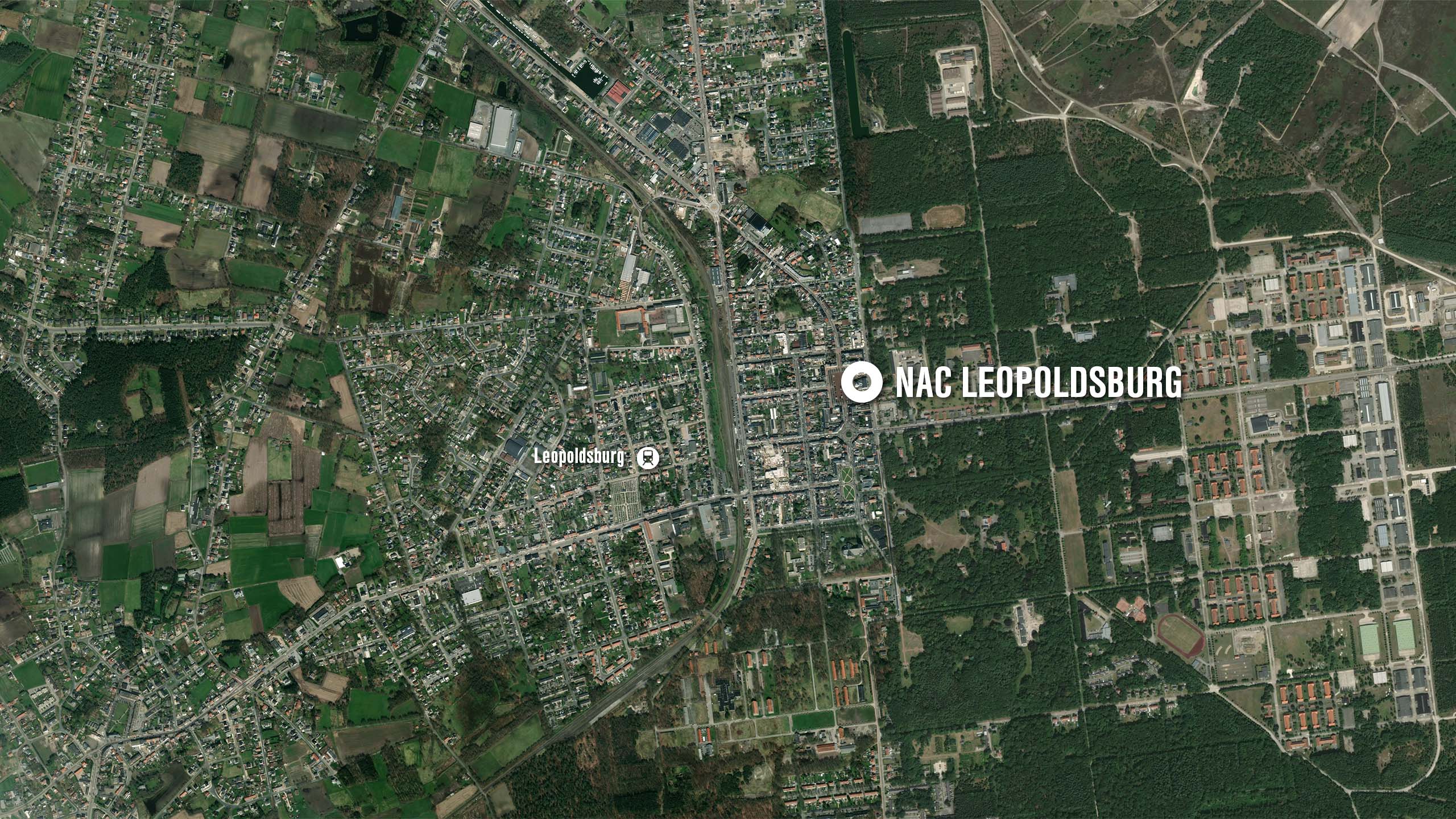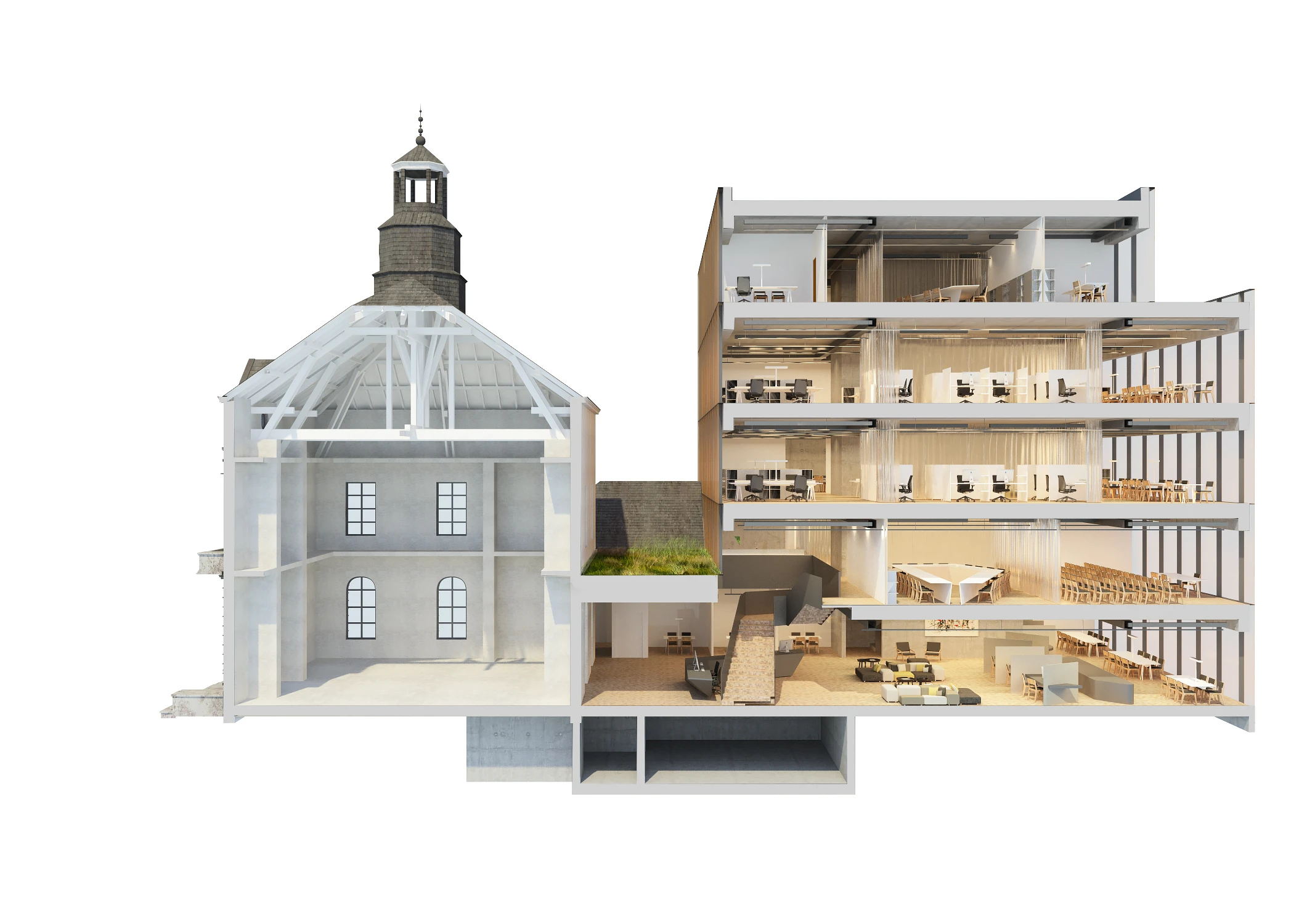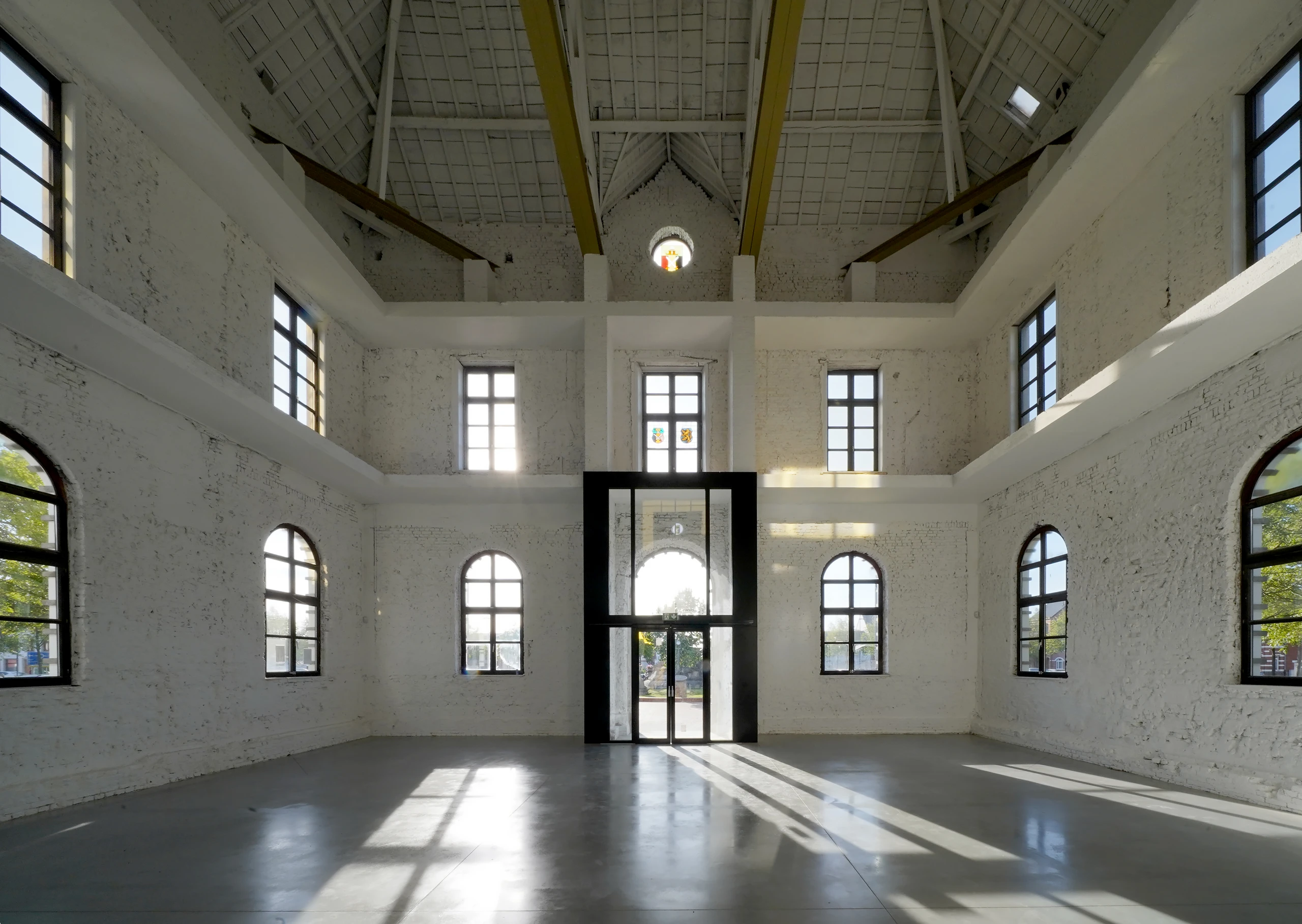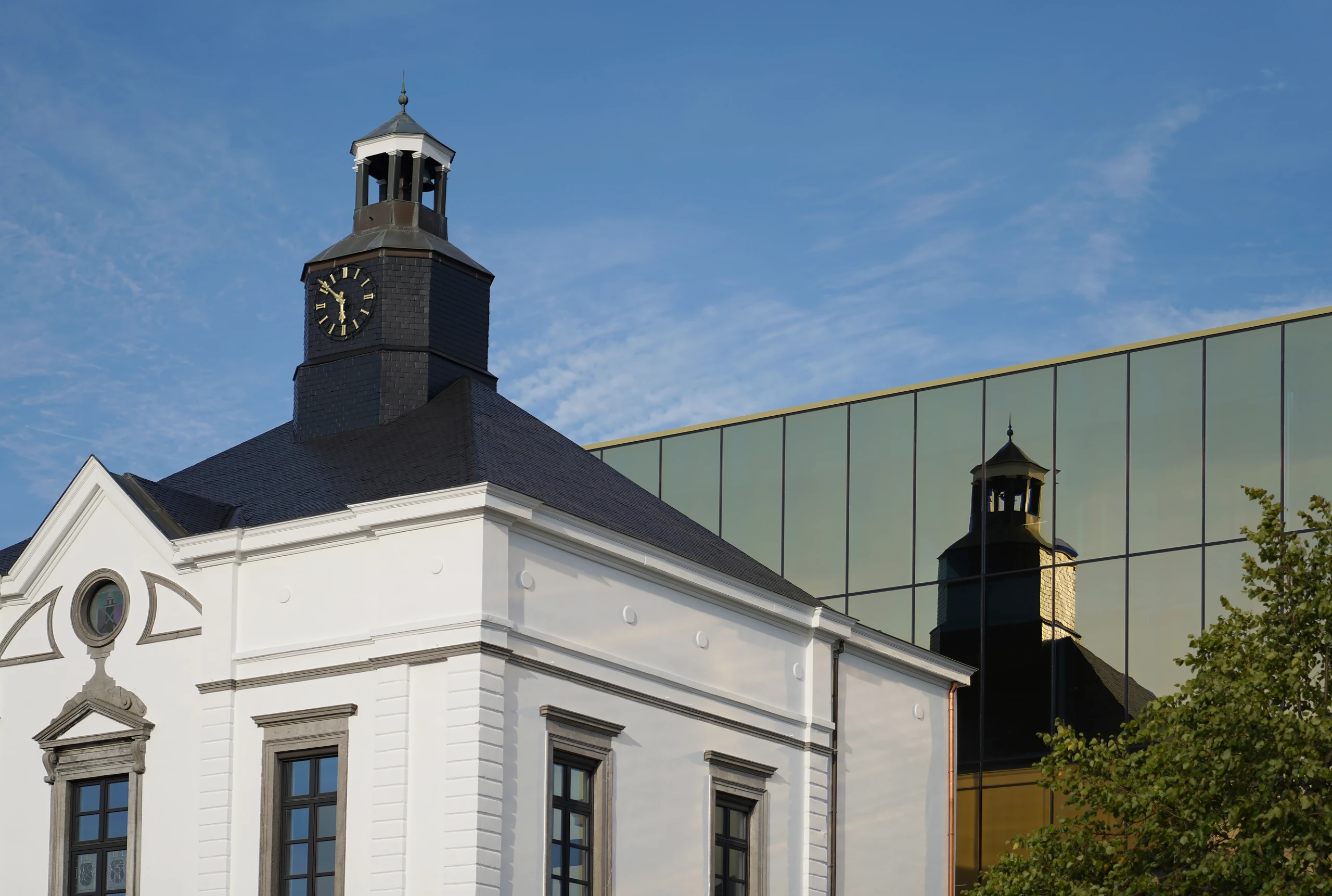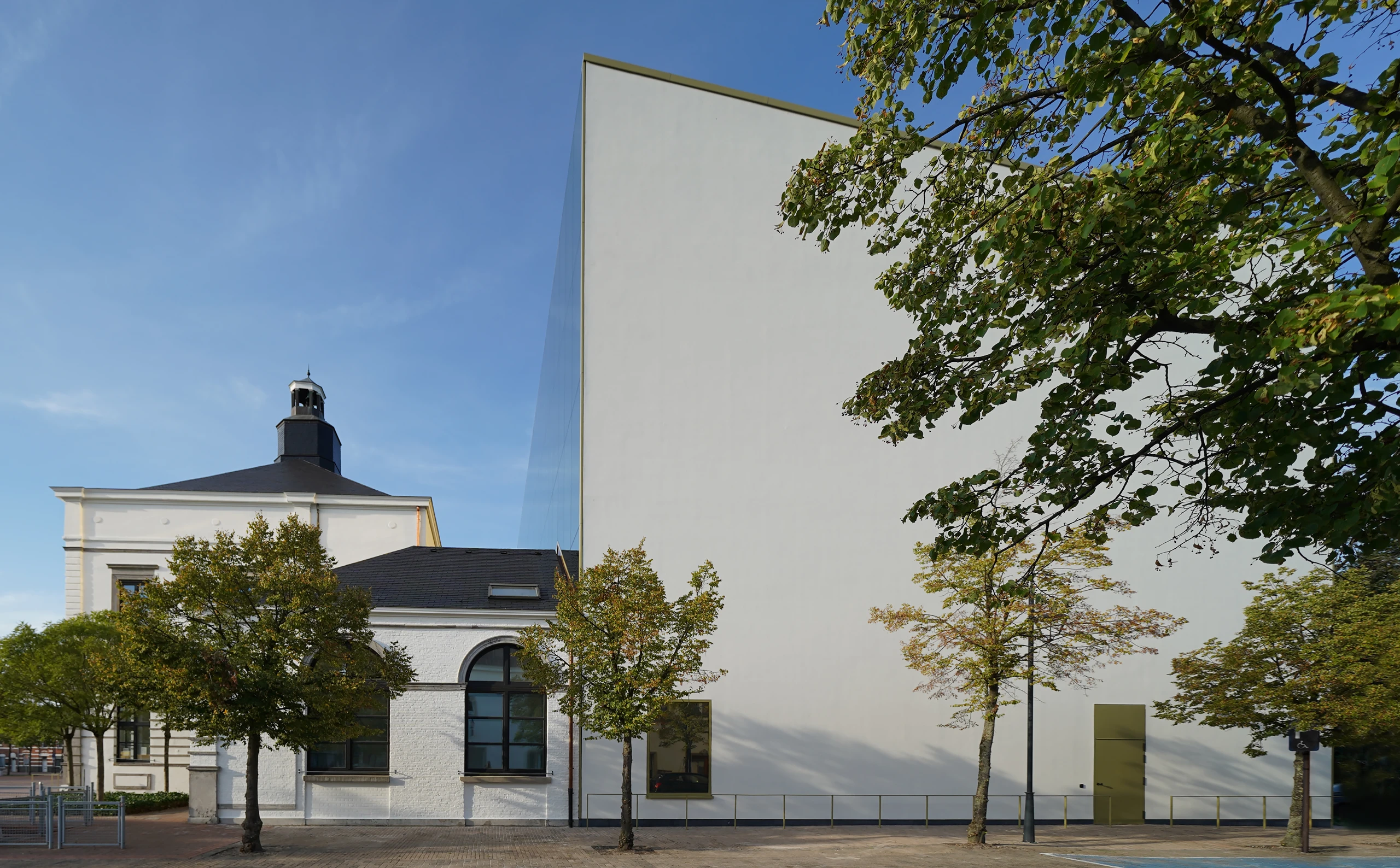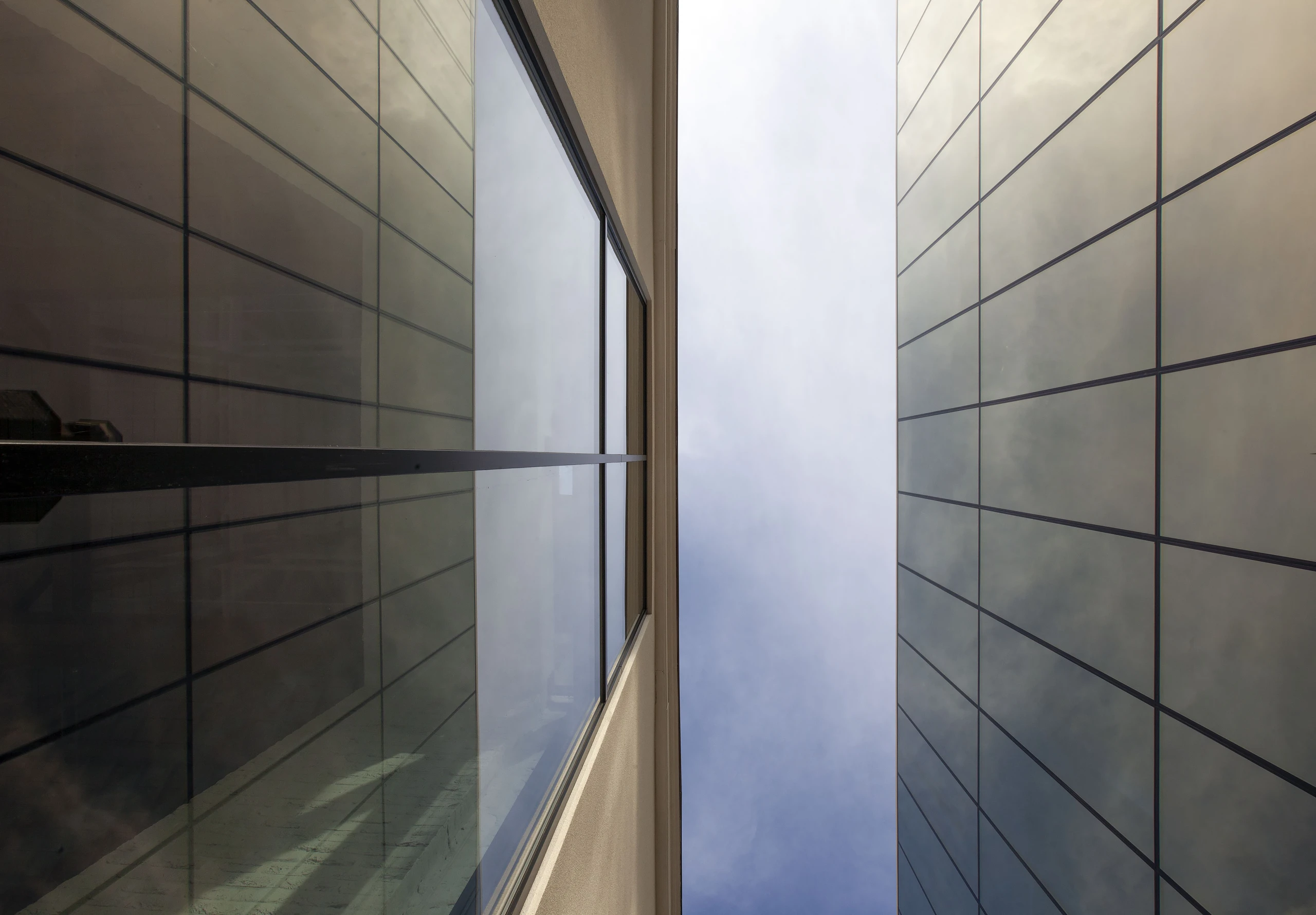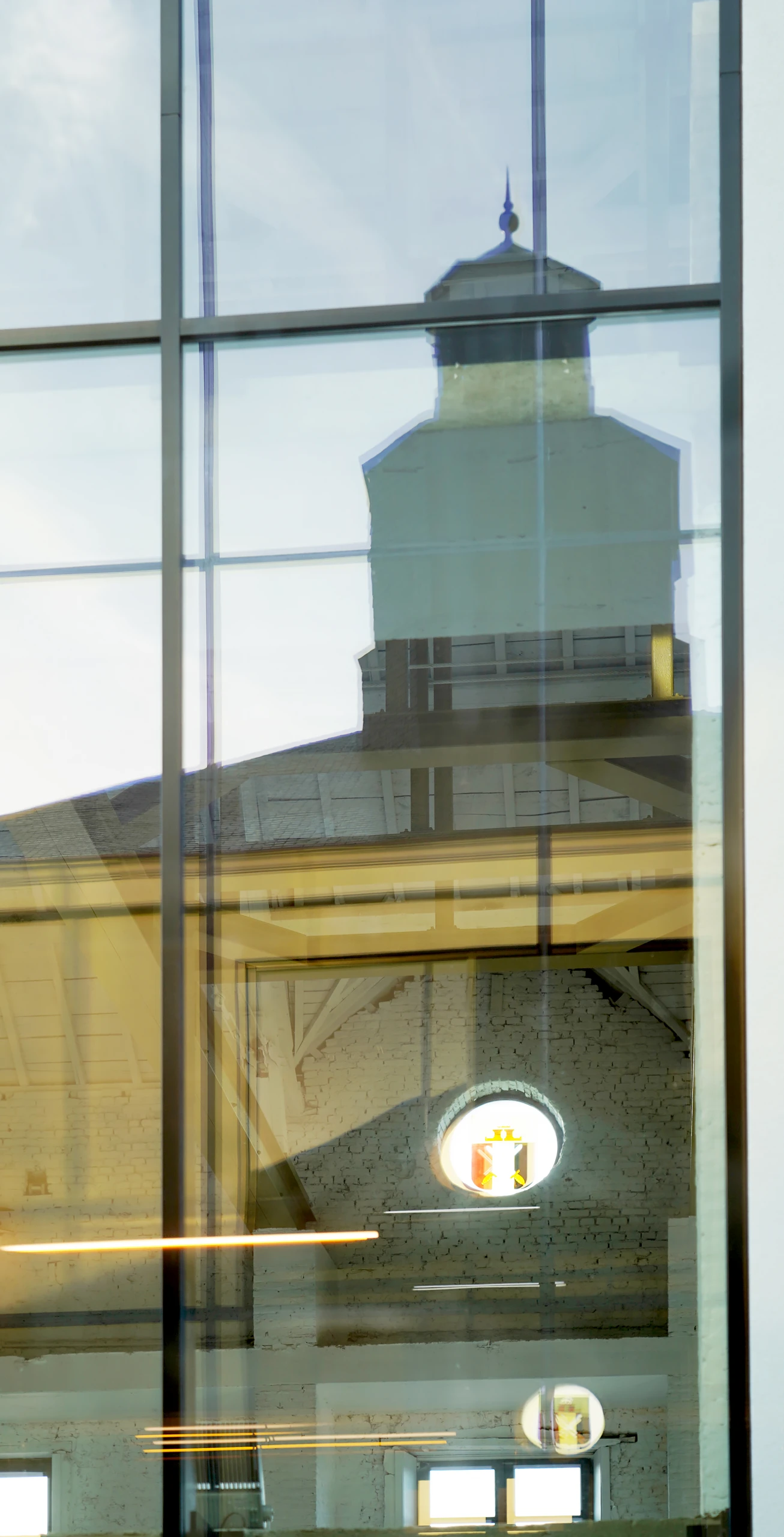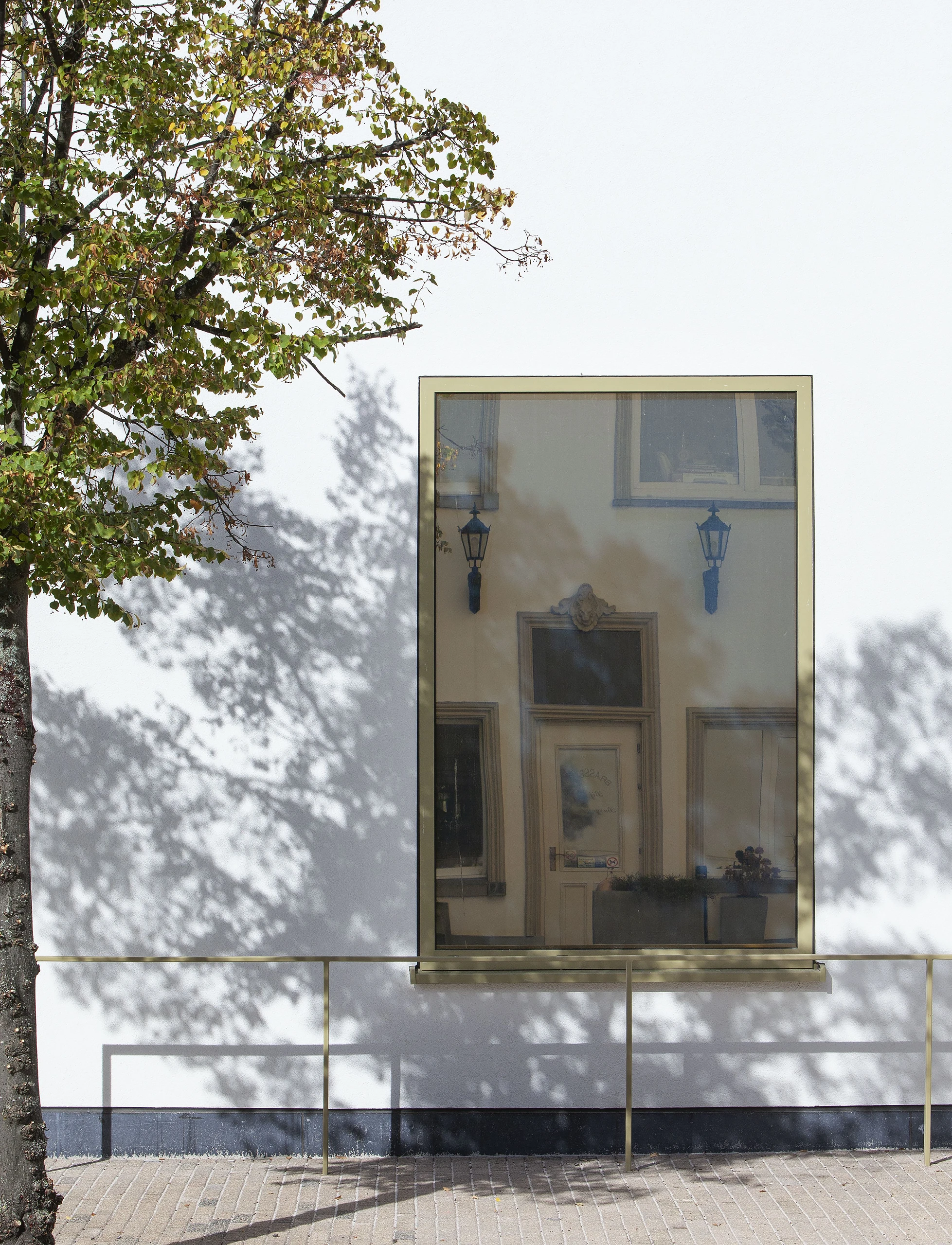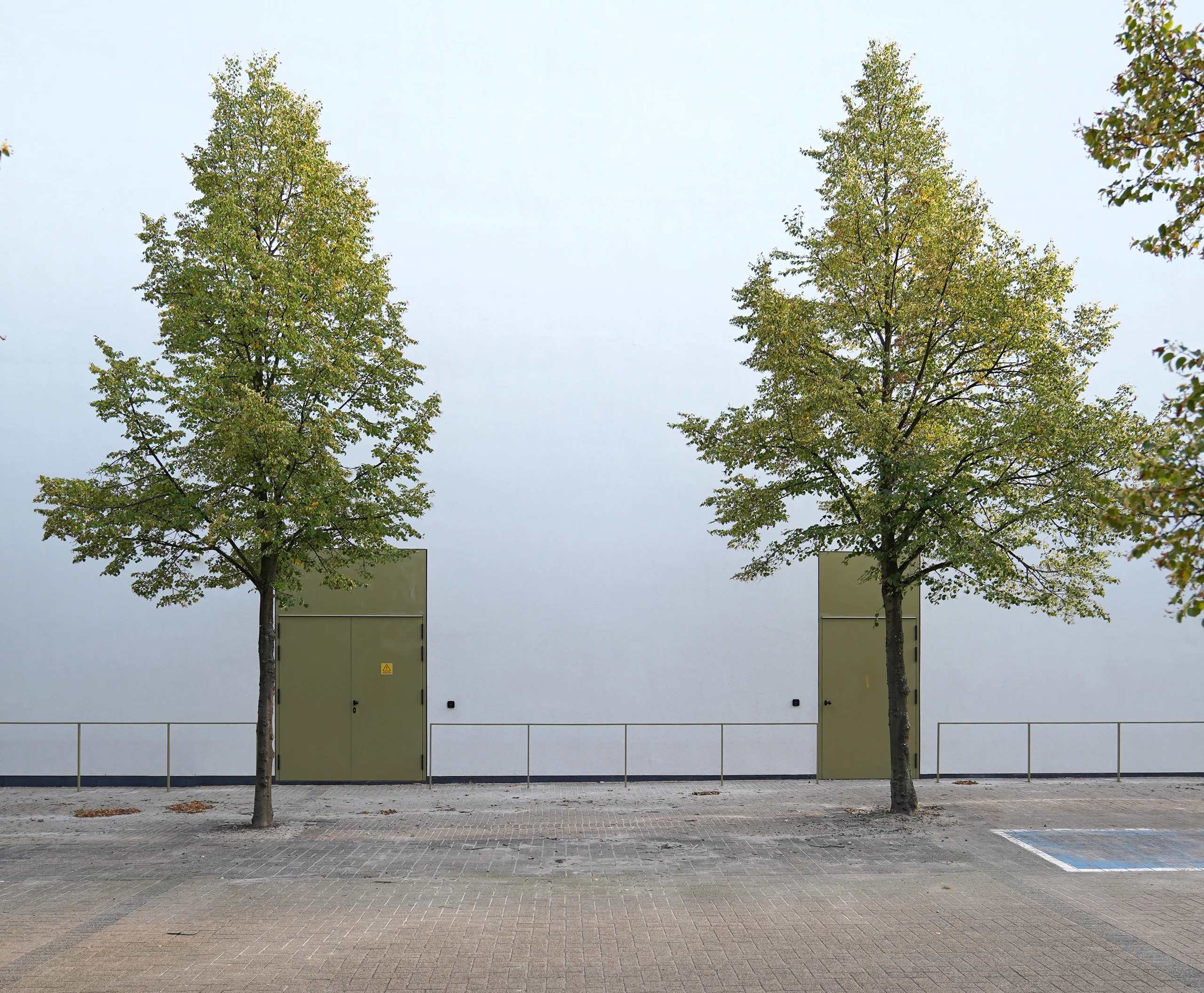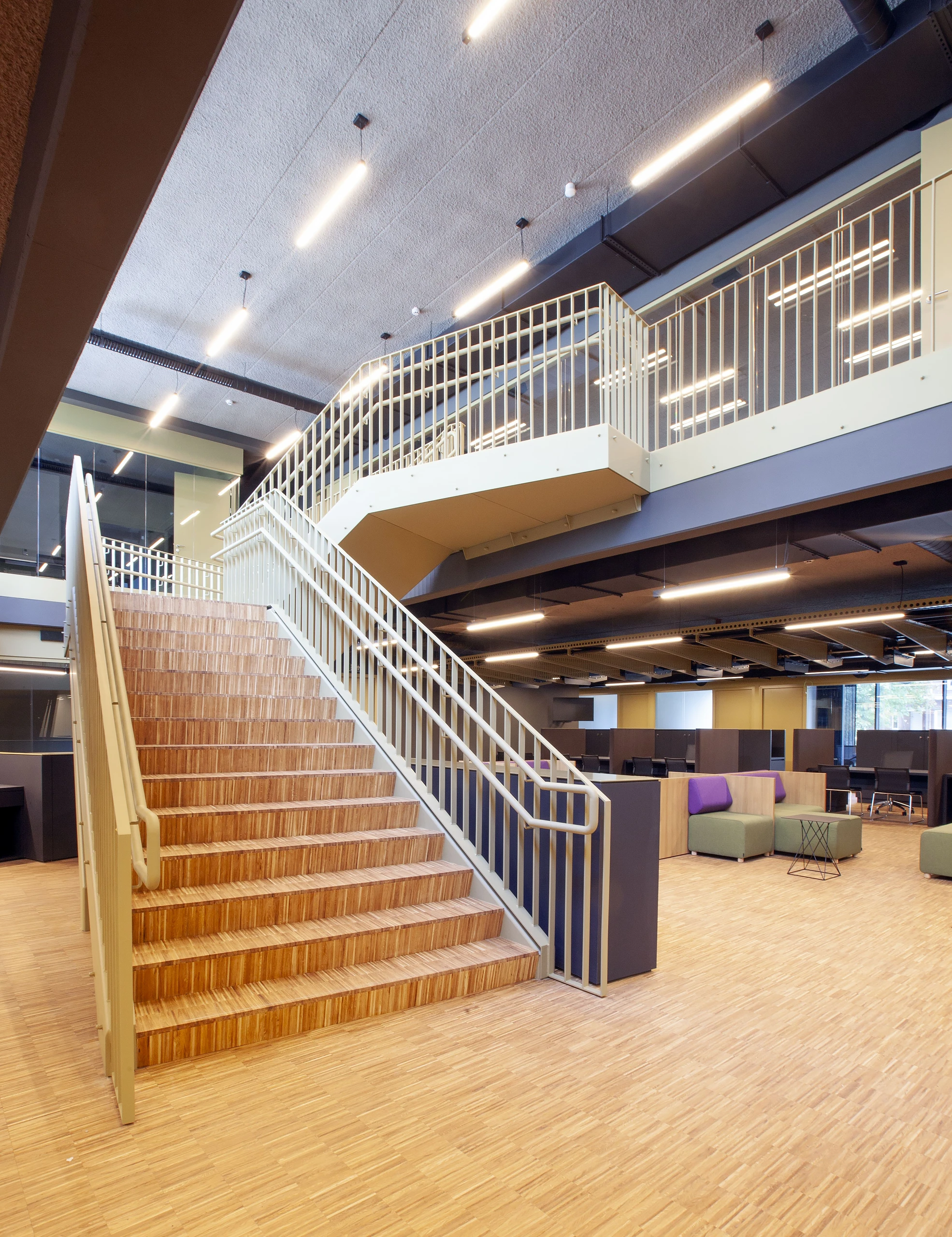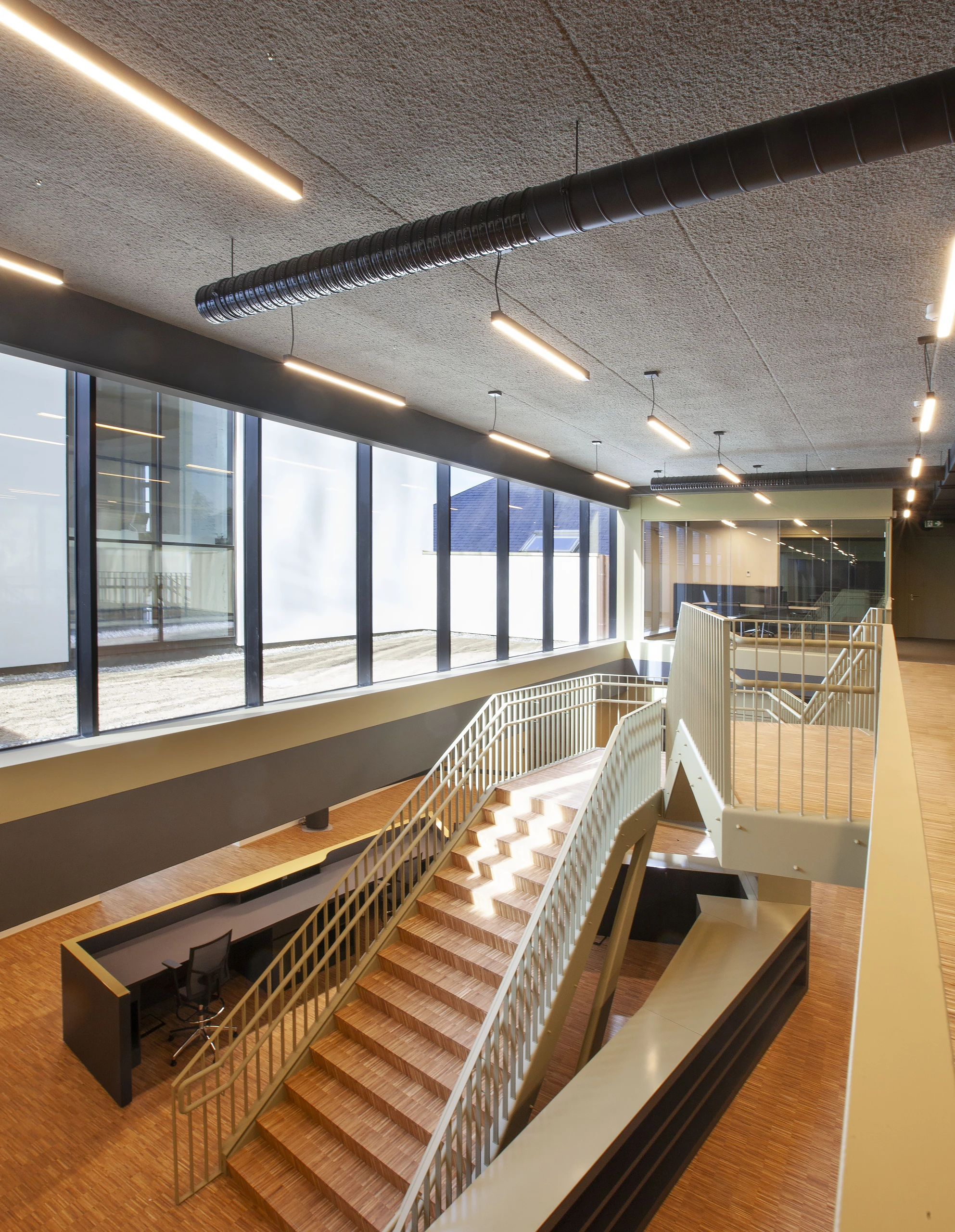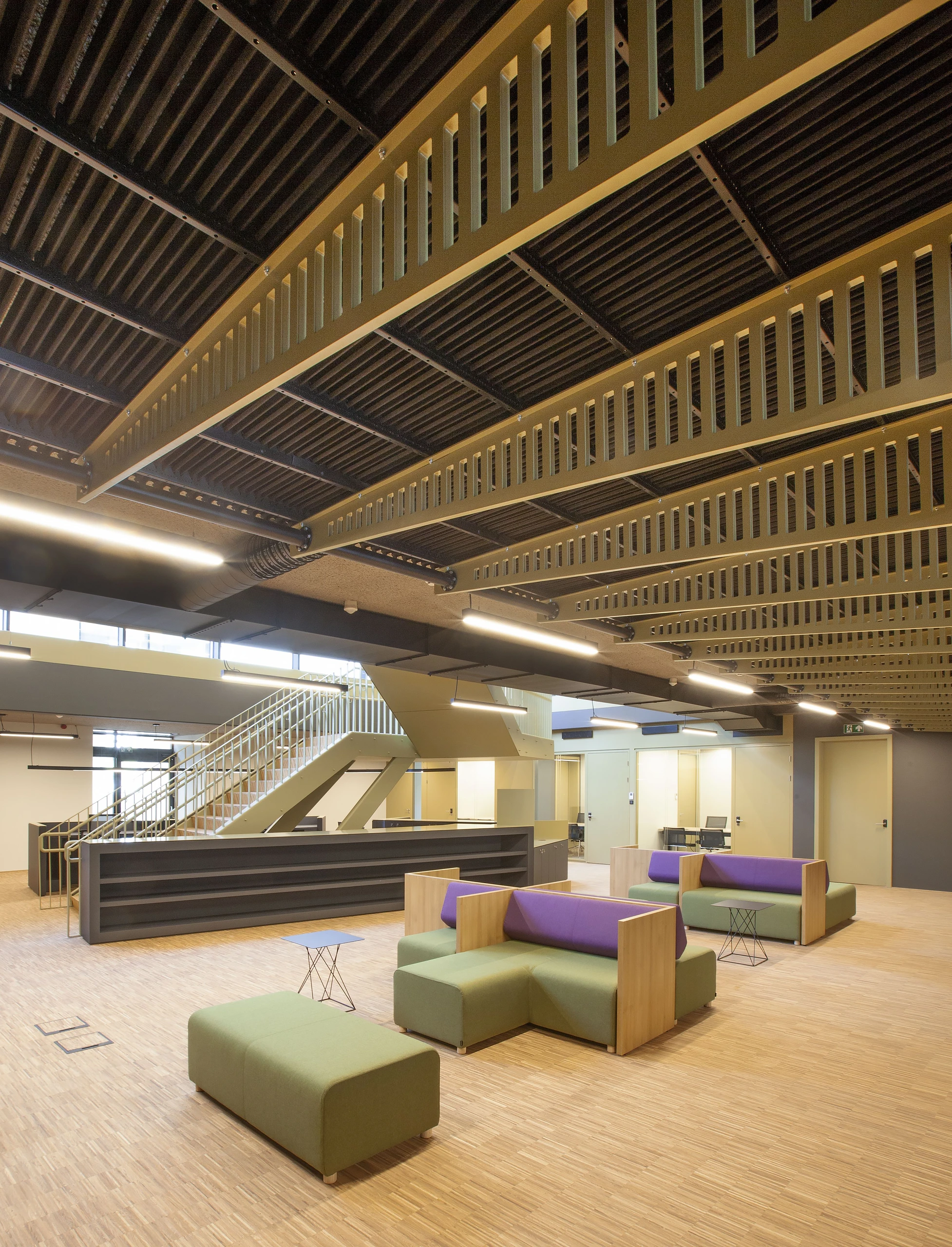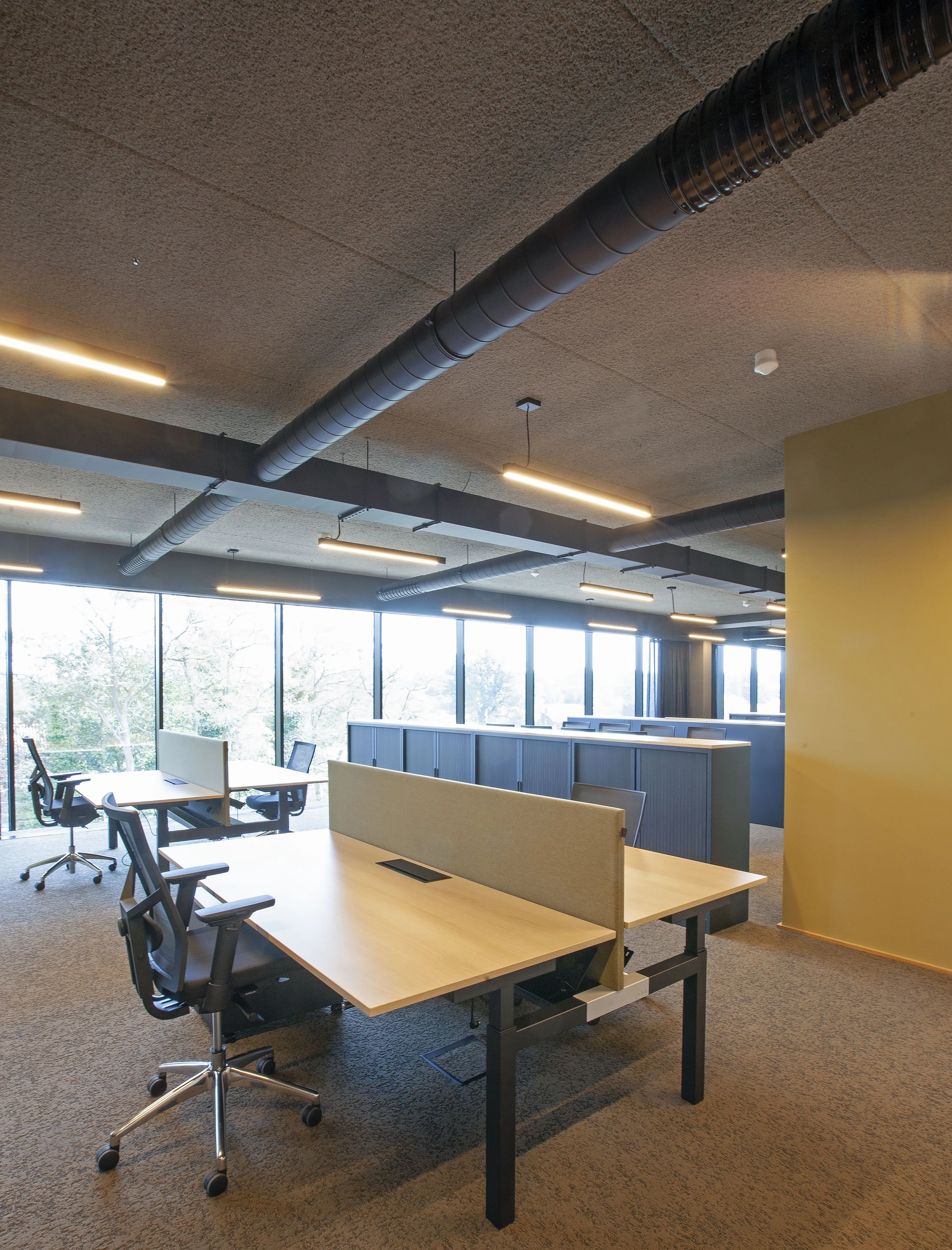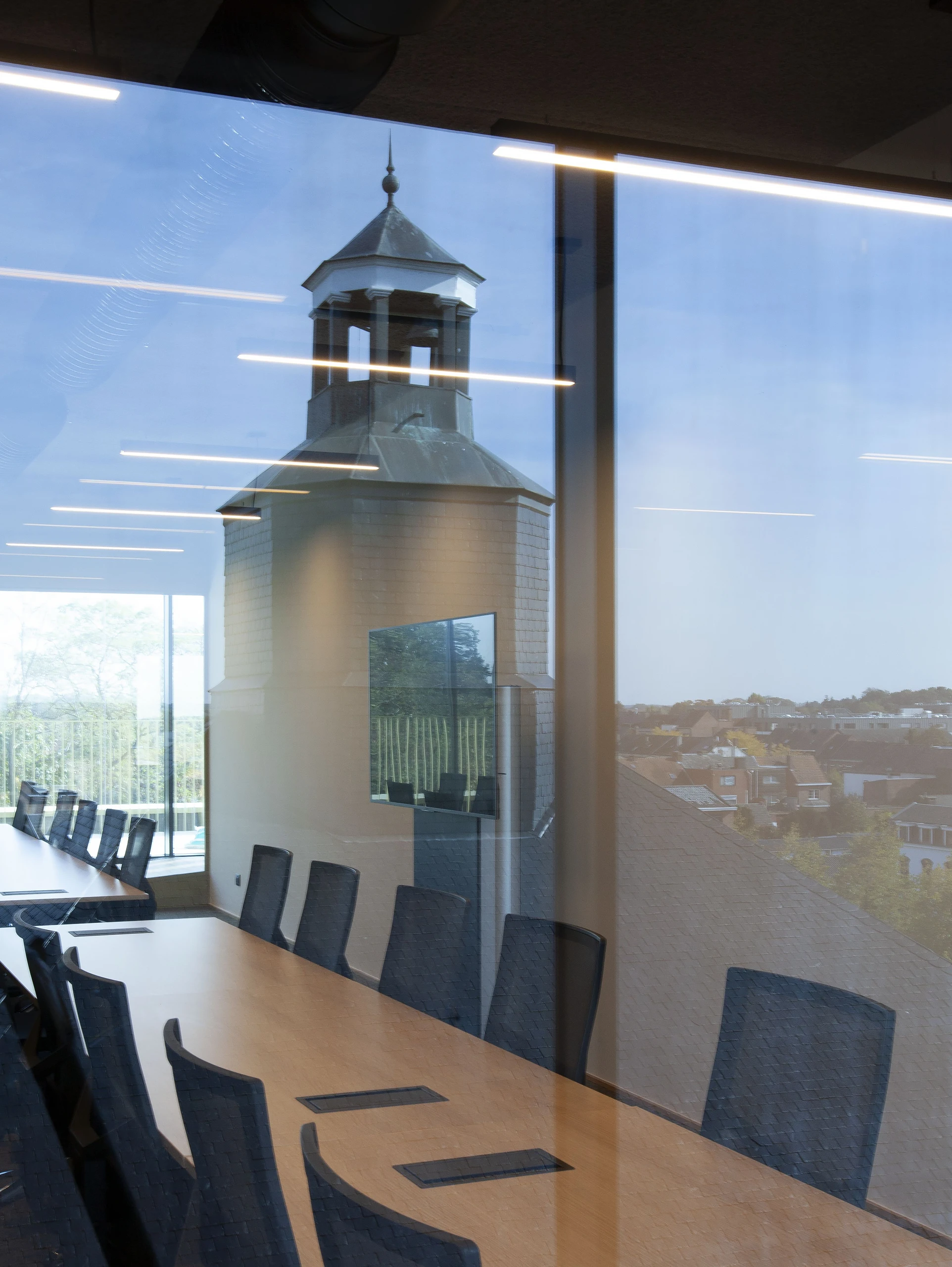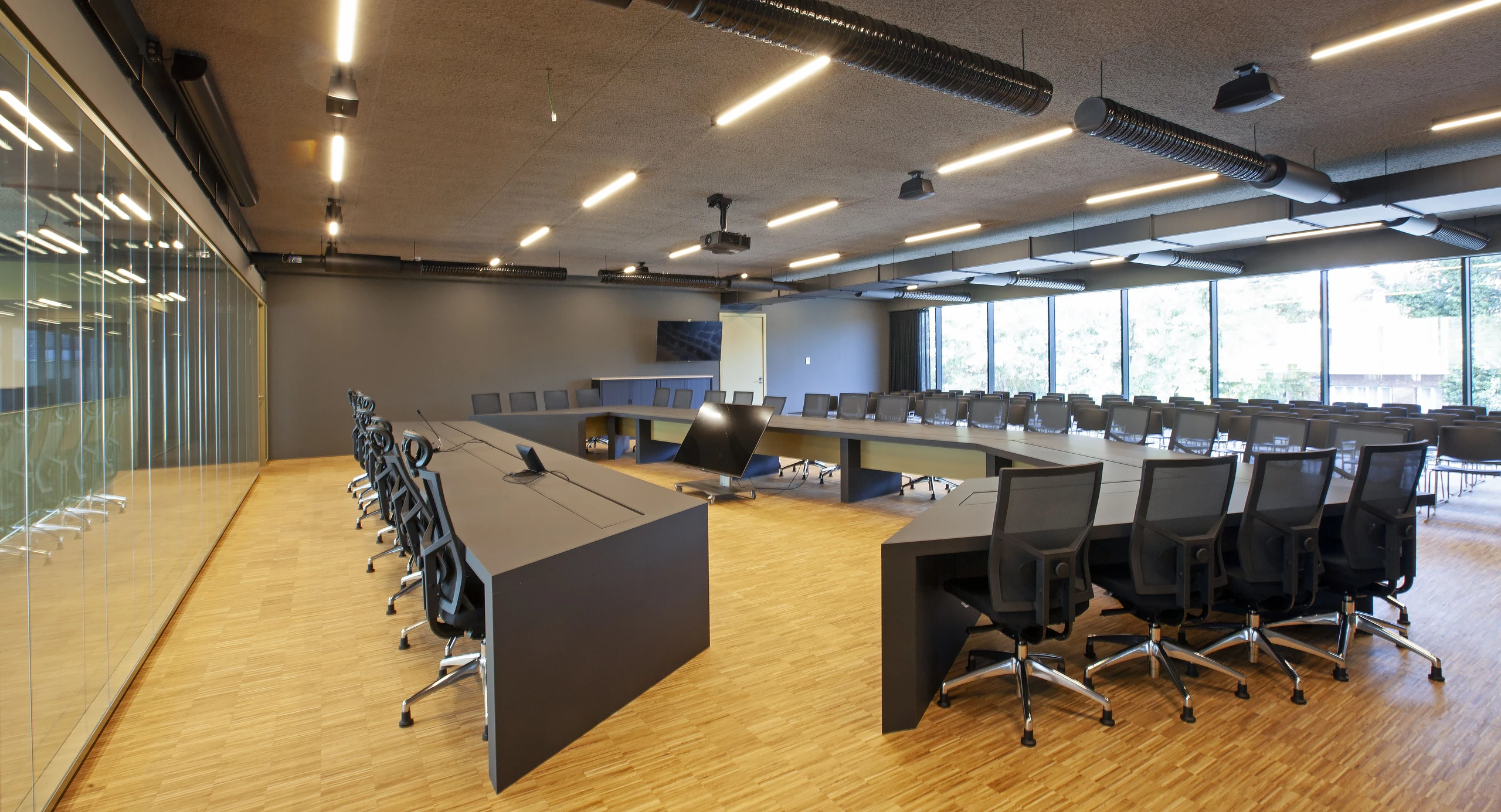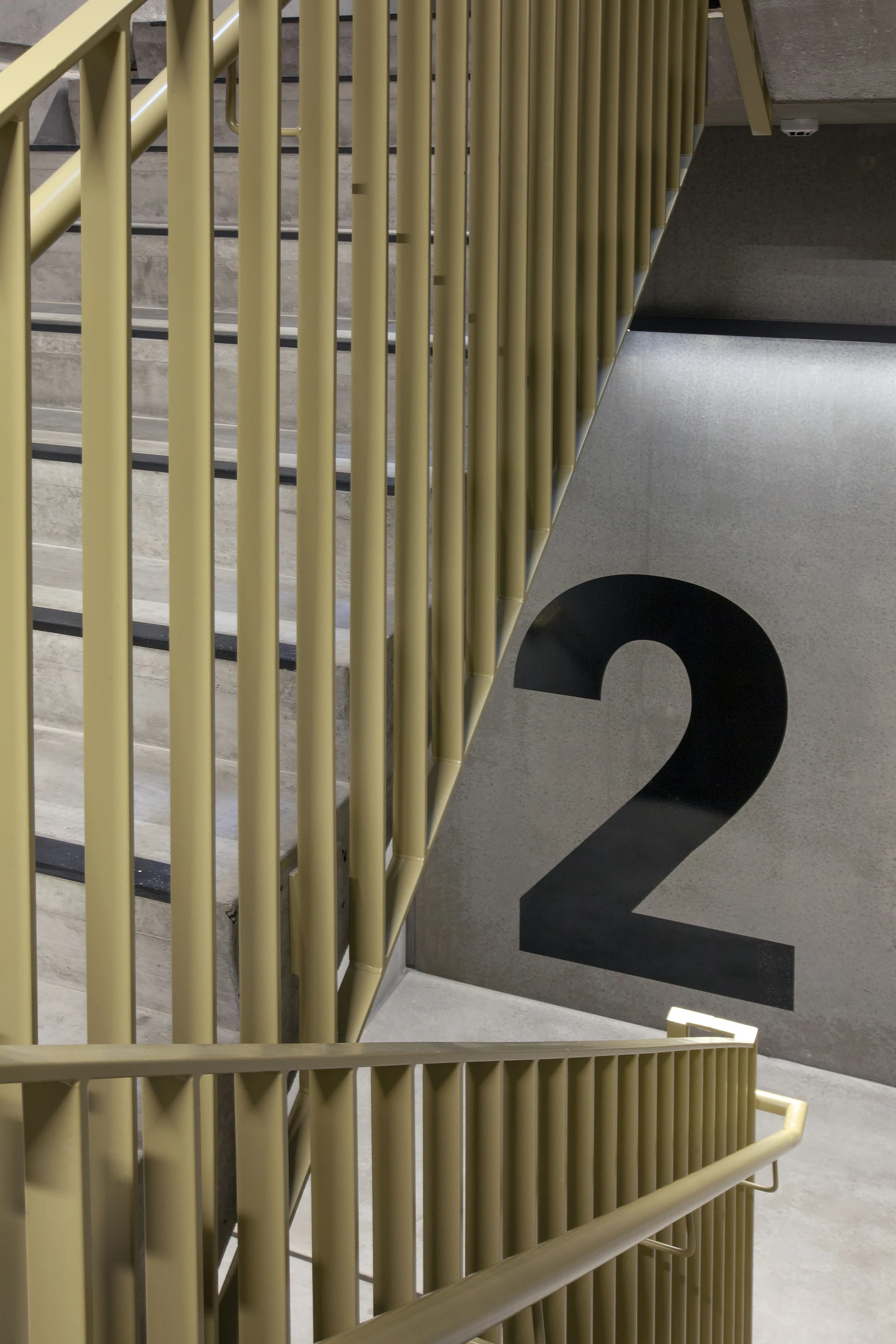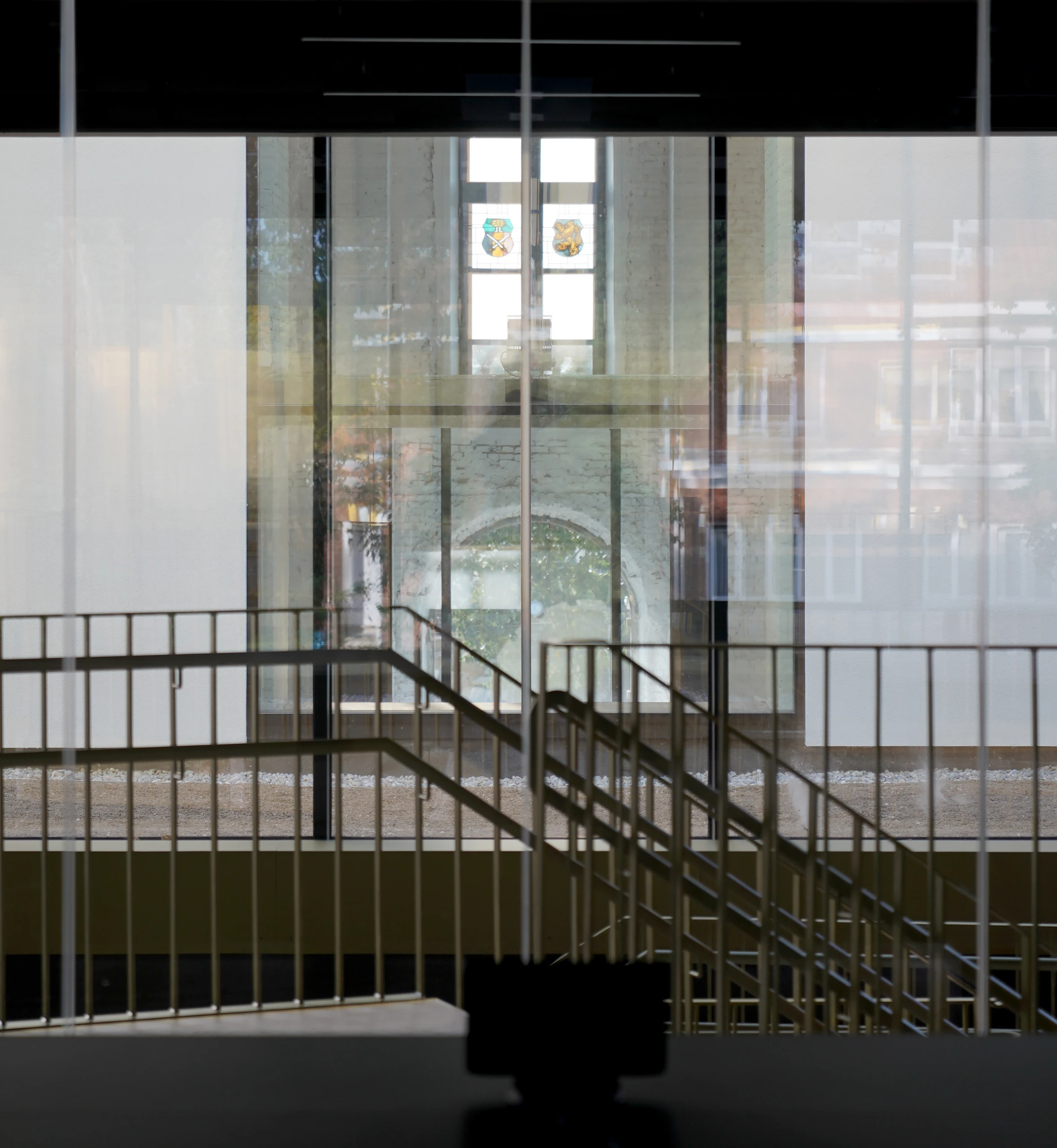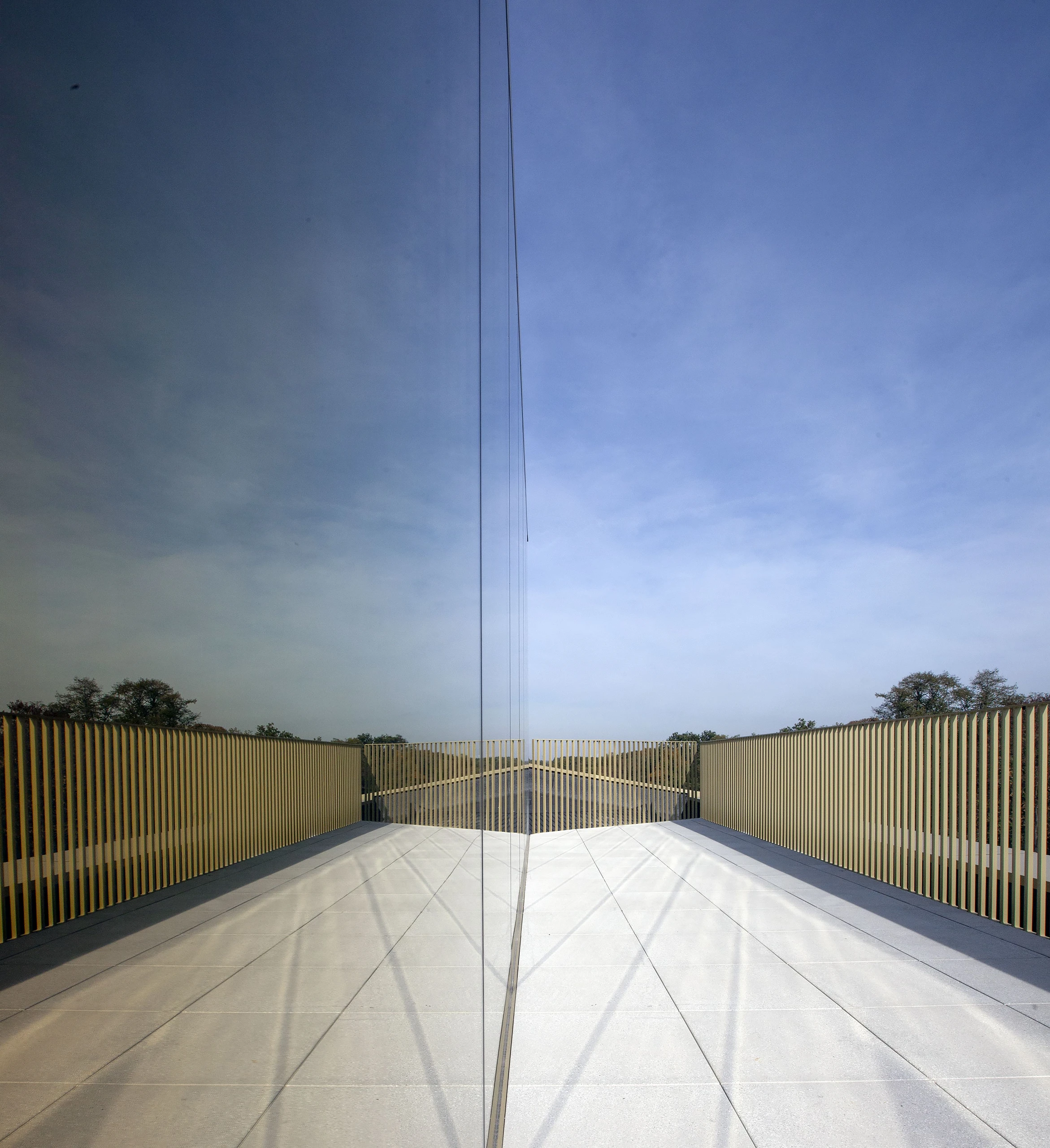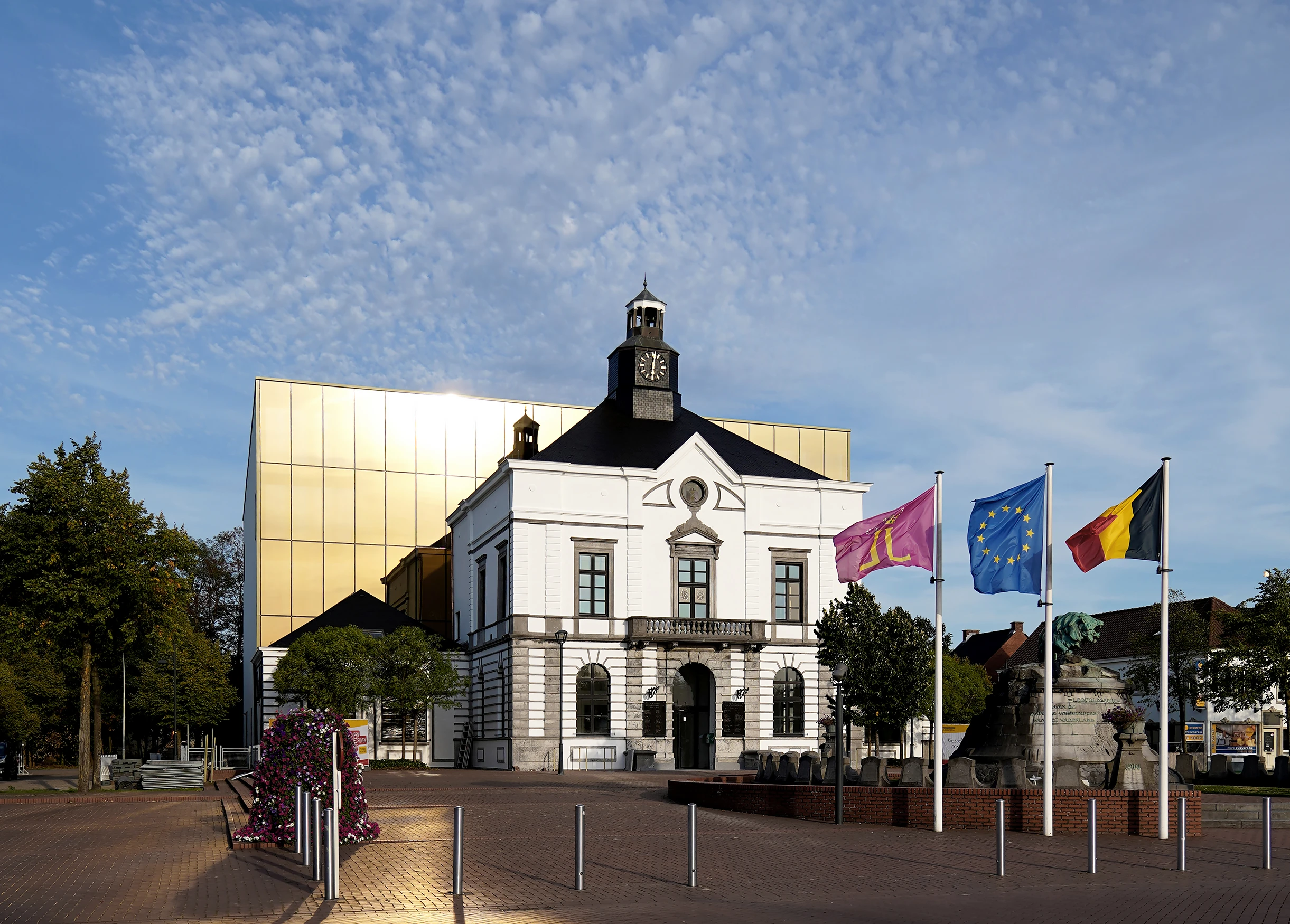- Location: Leopoldsburg
- Program: City Hall
- Area: 3.800 m²
- Year: 2018
- Status: Realized
- Link: www.leopoldsburg.be
- Label: BEN-gebouw, BREEAM excellent
Strategically located between a wooded military estate and the city center, the new Leopoldsburg City Hall showcases a thoughtful integration of historic architecture and modern design. The site, fronted by the Koningin Astridplein, features an original building from 1856, with only the front of the building retaining historical significance. The city council chose a design and build contract for the new city hall, emphasizing the iconic value of the front building by demolishing the rear section to enhance the visibility and appreciation of the historic structure from multiple angles.
A glass facade, set back from the existing building, creates a reflective interplay that enhances the view of the front and back of the historic building. This facade of energy-efficient reflective glass maintains a comfortable indoor environment while offering a unique visual connection to the plaza.
The new building is designed for functionality and flexibility, with visual connections to the surrounding wooded area. Public access is prioritized on the ground and first floors, with a welcoming reception desk and a monumental staircase leading to various functional areas, including a wedding and council hall.
Higher floors are dedicated to back-office functions, with the top floor featuring a lunch area and outdoor terrace, subtly set back to give a lower appearance from the rear. The office floors are designed as open plateaus with no physical hallways, using smart separations to ensure privacy and tranquility in the workspaces. The building features a variety of workspaces, meeting areas, coffee corners, and a cafeteria, all of which benefit from natural light and high-quality materials to create a warm, inviting atmosphere. The building’s technical design ensures efficient ventilation and air conditioning, contributing to its status as an energy-efficient (BEN building) and BREEAM EXCELLENT certified structure.

